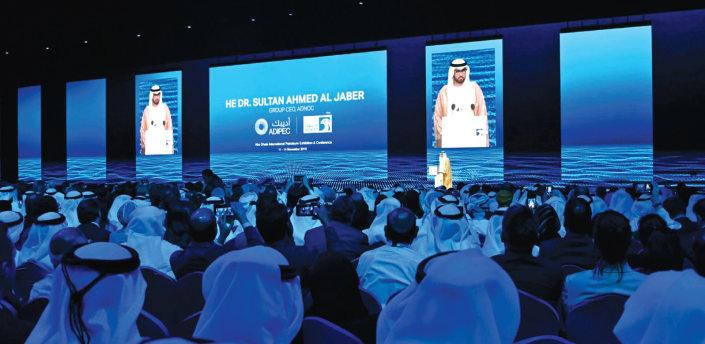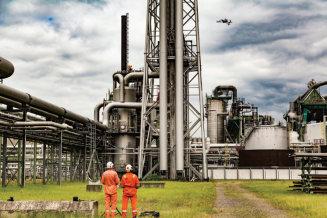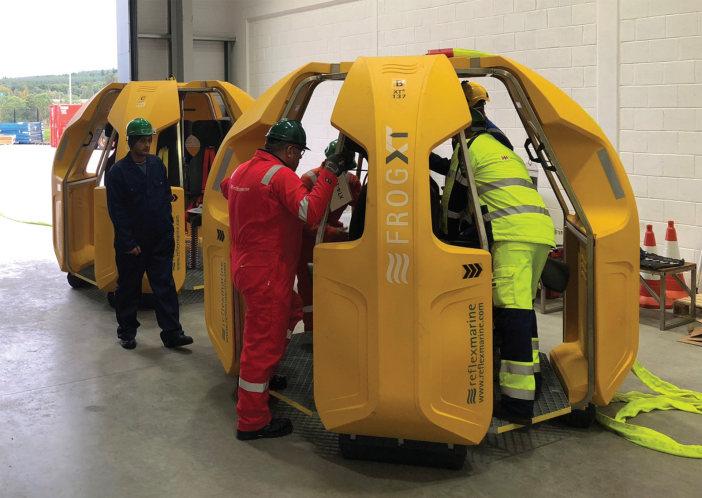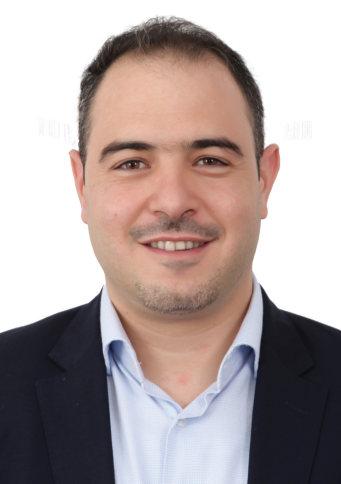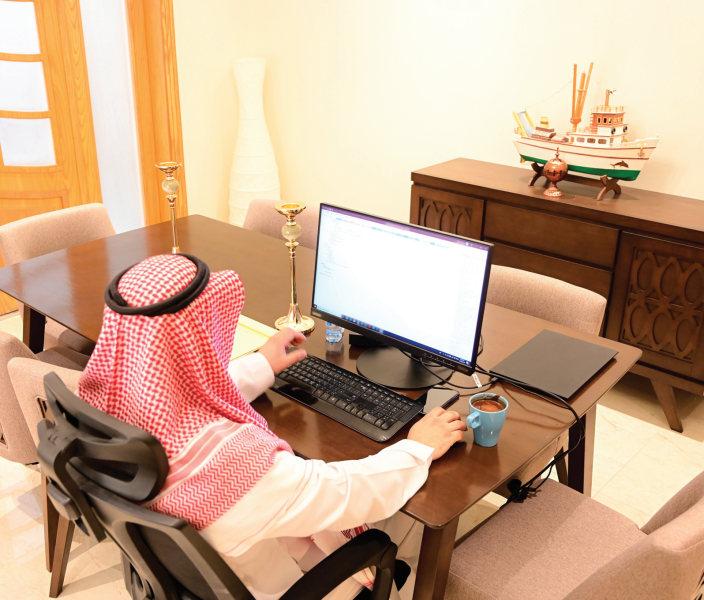
14 minute read
The future of gas development in the UAE
The future of gas development
in the UAE
Hamish McArdle, London global projects partner, Baker Botts (UK) LLP, and Wicki Anderson and Blair Jones, associates, Baker Botts LLP (Dubai), assess the impact of the UAE’s Jebel Ali and Mahani gas discoveries, and their role in the wider energy transition.
THE UAE’S OIL and natural gas reserves are estimated to provide more than 60 years of production at current levels, positioning the UAE as the sixth highest globally in terms of oil and gas reserves, and, despite having one of the most diversified economies in the region, the country continues to rely on oil exports for some 30% of its GDP. However, the emirates have markedly different hydrocarbon resources. Abu Dhabi has the seventh-largest oil reserves in the world and over 90% of the UAE’s reserves, with the other emirates at varying reserves and production levels and reliant on oil supplied by Abu Dhabi, or imports.
Although Dubai has been producing since 1969, with five current operational fields, its reserves and production had ceased to be substantial. The announcement of the Jebel Ali shallow gas discovery in February 2020, potentially one the largest global discoveries in the last 15 years, was accordingly significant for Dubai. The cross-border Abu Dhabi / Dubai discovery is the result of strategic cooperation between ADNOC and Dubai Supply Authority (DUSUP). It is expected that the shallow nature of the Jebel Ali discovery will mean lower development costs when compared to Abu Dhabi’s sour gas resource, and that both conventional and unconventional drilling methods and technologies will be used to achieve comparatively better production rates.
Developments in Sharjah are also positive, with the announcement in early 2020 of the Mahani-1 onshore gas discovery, the first onshore discovery in the emirate in 37 years. Mahani, a Sharjah National Oil Company / Eni discovery, is to be further evaluated, however initial well tests have indicated gas flow rates of up to 50mscf/d, which may mark a turning point for the emirate, given that production from its Zora and the Saaja fields are insufficient to meet Sharjah’s own demand for gas.
Gas production in Ras Al Khaimah ceased in 2016, however the emirate concluded a successful 2018 licensing round in which
The Jebel Ali discovery reinforces the UAE’s goal of achieving gas self-sufficiency.
concessions were awarded to Eni and PGNIG. In the other emirates, Umm Al Quwain has limited gas production from an offshore gas discovery in 2008 but no recent discoveries, and no commercial discoveries have been made in Ajman and Fujairah. Fujairah’s location on the Gulf of Oman has enabled the emirate to develop into a refining, bunkering and storage centre.
Energy security
While attention in the Middle East is often focused on oil production and export, particularly in light of the recent downward pressure on price and demand, gas has arguably played an equally significant geopolitical role in the region, particularly in the UAE. Natural gas is the UAE’s primary fuel for power generation and water desalination facilities, and sustained population growth and the rise of gas-intensive industries resulted in the UAE becoming a net importer of natural gas from 2008. Although the UAE seeks gas self-sufficiency by 2030, and potentially seeks to become a net exporter of gas in the longerterm, gas imports will continue for the foreseeable future.
Currently, two bcf/d of gas is imported to the UAE via the 364-kilometre subsea Dolphin Pipeline, connecting Qatar’s North Field to the UAE. Despite the status of diplomatic relations between the UAE and Qatar, gas flow through the Dolphin Pipeline has continued. The term of the Dolphin supply contract is understood to expire in 2032, by which time the UAE’s
domestic gas production might have changed significantly, and there are expectations that the Jebel Ali and Mahani discoveries will be major contributors to this transformation. LNG is also imported to the UAE, in Dubai since 2010 via a Floating Storage and Regasification Unit (FSRU) and in Abu Dhabi since 2016, utilising ADNOC’s FSRU at the Ruwais LNG terminal.
While the UAE does not lack gas reserves, future energy security in gas will depend on establishing supplies from the recent gas discoveries that will compete economically with alternatives, including gas imports. Abu
The Mahani discovery could be a catalyst to Sharjah’s energy sector.

Dhabi is making headway in gas selfsufficiency through existing sour gas reserves, significant ADNOC development projects including the Gasha, Hail and Dalma fields and through gas-cap capture from offshore fields.
The Jebel Ali discovery should contribute to securing Dubai’s medium- to longer-term gas supply needs, while the Mahani discovery in Sharjah could well be a catalyst to Sharjah’s energy sector, reducing gas import dependence and enabling gas supply from Sharjah to other emirates.
COVID-19 uncertainty
The oil and gas sector in the UAE, like many others, has been hit hard by the COVID-19 pandemic, with demand reduction, price pressure and the need to allocate funding to economic stimulus programmes. Global
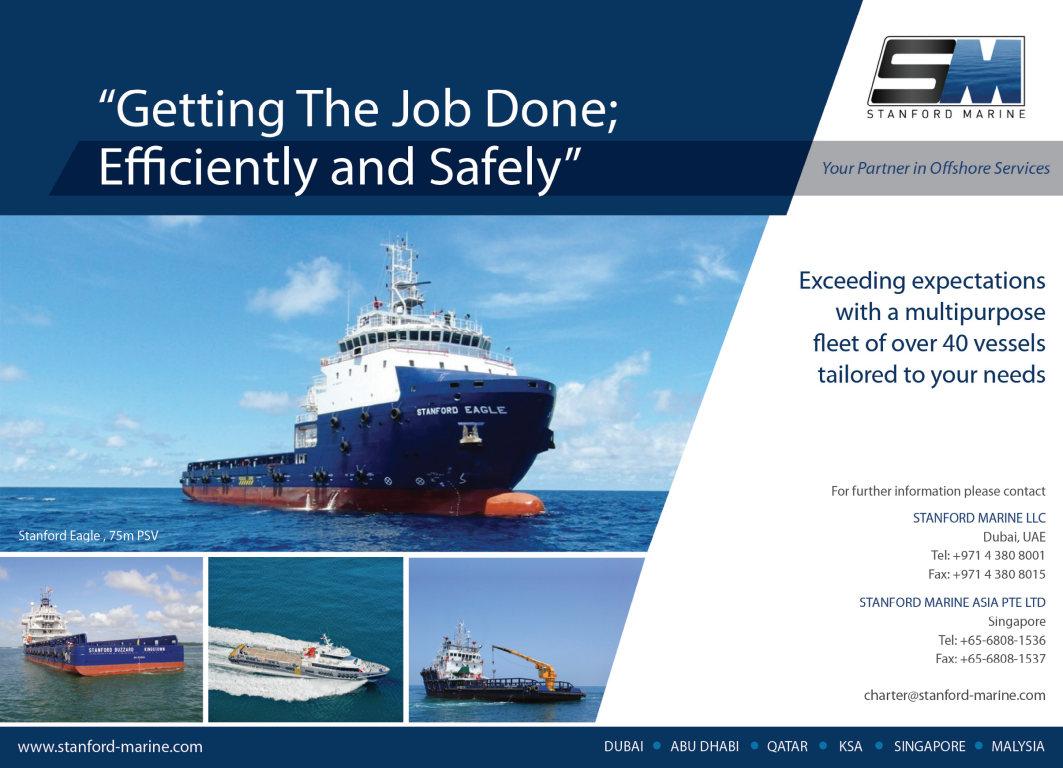
demand for oil is not expected to recover until 2022 and, in response to this and OPEC efforts to address the oil price and global supply, Abu Dhabi revised down its 2020 average production forecasts. Although the impact of COVID-19 on the UAE oil and gas sector is continuing, and spending is being reduced on projects, the effect of the pandemic on project development timelines and on long-term production forecasts remains to be seen.
Energy transition
The recent UAE gas discoveries, and the opportunities that could come from them, should be viewed within the context of the energy transition that is being increasingly discussed globally, including within the upstream oil and gas industry, and that is increasingly impacting hydrocarbon investments and project development decisions. Already the UAE leads the region in renewable energy development, particularly in solar power generation. In September 2020, the UAE’s Minister of Energy and Infrastructure emphasised that climate change had increased in importance in consequence of COVID-19. The UAE plans to transition from 100% natural gas reliance in 2017 in power generation to generate 50% of its power needs from green energy by 2050. Solar is targeted to contribute 44% of the energy mix for power generation, with gas reducing to 38% and clean coal and nuclear making up the balance.
Various solar projects are being developed throughout the UAE, and Abu Dhabi already hosts about 80% of the installed solar capacity in the region. Dubai is developing the Shuaa Energy 3 900MW mega-solar project, and the emirate of Ras Al Khaimah recently launched a pre-qualification for a 15MW capacity aggregated solar tender, the first in the emirate.
In addition to the strides made in expanding renewable energy capacity in the UAE, there is an increasing focus on the potential to develop a low-carbon hydrogen economy and other technologies that are complementary to the oil and gas industry, including Carbon Capture, Utilisation and Storage (CCUS). ADNOC has announced its intention to expand CCUS capacity fivefold by 2030 through its existing Al Reyadah facility and other facilities in the future, such as the Shah gas plant, and through this approach ADNOC aims to maintain its position as a leader in low carbon intensity oil and gas production and to maximise the value of its reserves through use of captured carbon dioxide for enhanced oil recovery.
These ambitious programmes are complemented by the Barakah project – the Arab world’s first nuclear power plant – which recently started up its first reactor. When fully
The Barakah nuclear power plant will deliver a significant proportion of the UAE’s energy needs when fully operational.
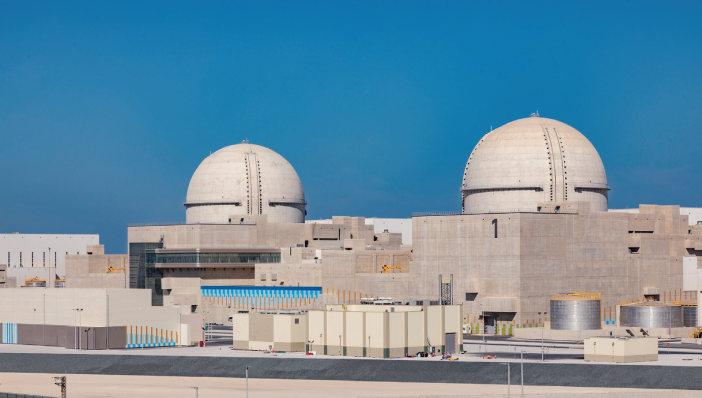
operational, this 5.6GW complex, developed by Korea Electric Power Corporation and Emirates Nuclear Energy Corporation (ENEC), is expected to deliver a significant portion of the UAE’s electricity needs when all four reactors are operational, with correspondingly significant reductions in carbon emissions.
Surplus gas – the future
Some industry commentators consider that the future displacement of gas within the UAE’s energy mix seems certain, and believe that Dubai’s demand for gas may peak this year or the next. However, natural gas projects both upstream and in the power sector will continue to be developed, such as
the 2.4GW Fujairah F3 IPP project, which will be the country’s largest gas-fired power plant when it comes online in 2022. Where domestic demand for gas is reduced, as expected, and where the switch in demand to alternative energy sources occurs more rapidly, the question for the UAE is how it will utilise its surplus gas production.
As an alternative to, or alongside developing an export market, domestic gas production is expected to be channelled into industrial and petrochemical projects. ADNOC already plans to triple its petrochemicals output by 2025 through its Ruwais facilities alongside refining capacity as part of downstream investment plans for its 2030 growth strategy.
While Qatar has long been a preeminent LNG exporter, Abu Dhabi has exported LNG since 1981. The three-train Das Island export terminal already enables ADNOC to export LNG, and increased LNG exports may be anticipated in the future based on the growth of additional gas supplies that will be available for export. Traditionally supplying LNG to Japan, ADNOC is now seeking to diversify its customer base. As gas produced from the Jebel Ali discovery is intended to be supplied to DUSUP for use in Dubai, it is expected that export of LNG from the UAE would be fed from the other projects being developed in the UAE and from potential new discoveries. But it is clear that the UAE faces challenges in developing its LNG export market, given the competitive market globally, and the position in that market of existing low-cost producers.
Discoveries such as Jebel Ali and Mahani will require significant capital expenditure to bring them online, and this will be a challenge, in light of the current uncertainty as to the extent of the resource, possible technical challenges in production – and the associated cost of production – as well as uncertainty on the possible markets and end use for the gas. An additional challenge to the development of these gas resources for domestic use is the level of integration of the UAE’s gas infrastructure, which is likely to require strategic cooperation amongst the emirates and their various gas companies, as well as significant investments.
Overall, the UAE is likely to continue to prioritise gas as an important fuel that is complementary to an energy transition to a lower carbon and more diversified economy. These recent gas discoveries in the UAE should play their part in this process, despite the many uncertainties, and the current economic challenges that the UAE and the oil and gas industry face. n
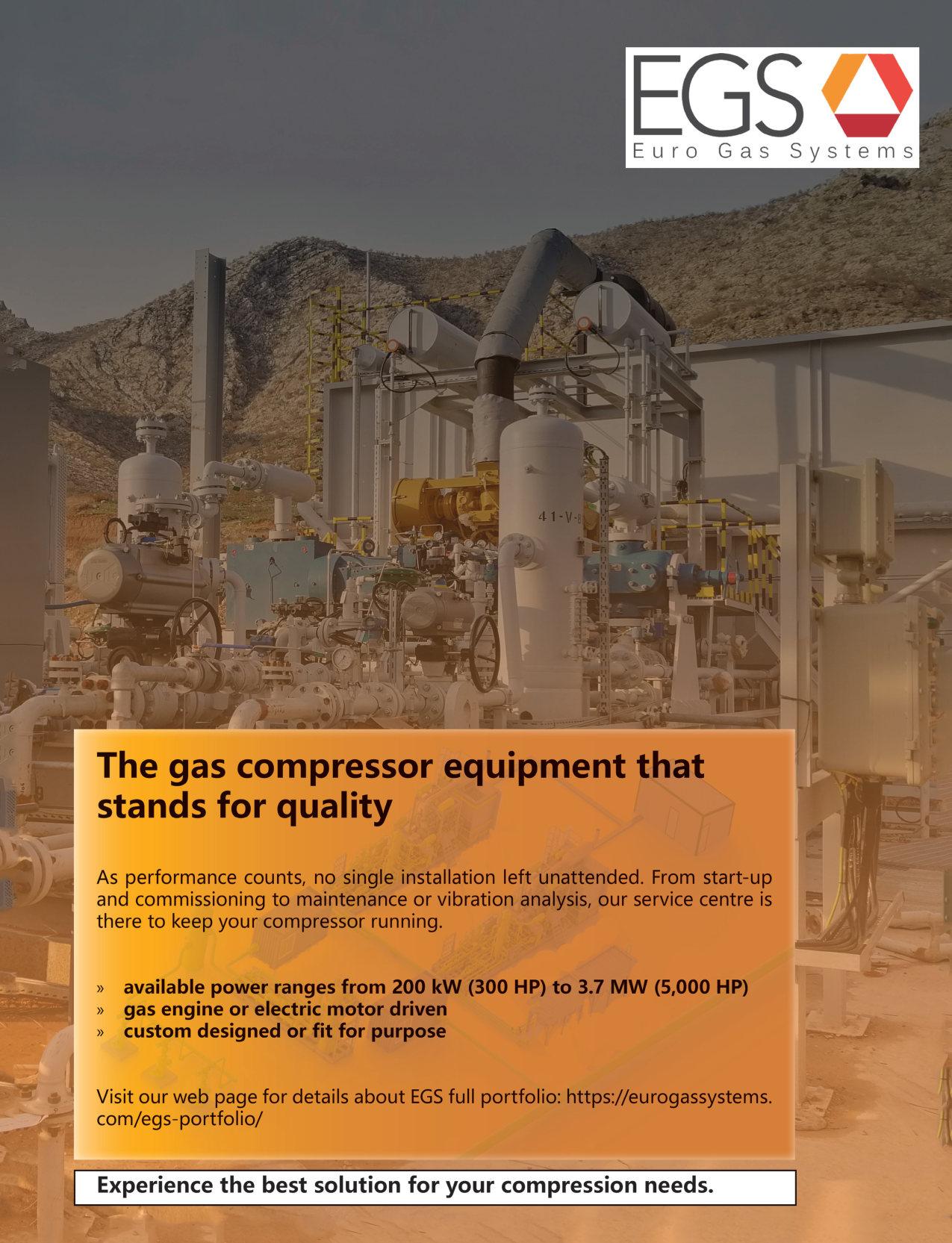
AI and the cloud enable energy’s transformative leap
By leveraging artificial intelligence and the cloud in tandem, Middle Eastern oil and gas companies can thrive in the post-pandemic economy, says Dr. Tariq Aslam, head of MEA, AVEVA.
THE CURRENT PANDEMIC has shown the oil and gas sector how dependable enterprise operations can be upended almost overnight. Workforce routines at extraction sites and refineries have been disrupted, causing unplanned outages, as we saw at the Sharara oilfield in Libya. With supply chains interrupted, parts manufactured in traditional source markets could not be delivered on time, delaying essential maintenance. Border closures and an unprecedented drop in demand have further constricted already tight economic operations.
Not only do these conditions look set to continue over the short term, but other challenges loom over the foreseeable future. A supply glut and a depressed outlook for hydrocarbon prices have been forecast over the medium-term, and over the long-term, oil demand could peak within two decades as fuel demand drops and pressure to act on climate change mounts.
To thrive in this brave new world, oil and gas players must respond with transformative action, taking inspiration from the industry’s bold, pathbreaking history. At AVEVA, we have made it our mission to help companies capitalise on current opportunities, while striving to protect lives and livelihoods for the companies and communities we serve.
Success in a post-pandemic world will require innovative thinking and action at scale. Here, two transformative new technologies will shape a sustainable future for oil and gas and its partner industries, and for the world around us. These are artificial intelligence, or AI, and cloud computing.
AI is enabling better decisions
AI has been with us for over three decades. As it becomes more sophisticated, with wider use cases, it allows organisations to improve productivity. With unified smart analytics that bridge complete data stacks, teams can leverage mathematical thought processes across all their activities. Individuals are thus afforded scale and capacity that would
Image Credit : AVEVA

Dr. Tariq Aslam, head of MEA, AVEVA.
otherwise have been unavailable: knowledge, data-led intelligence, and the capacity to recognise new opportunities. AI enables people to make better decisions – and even recommends courses of action – that enhance the capabilities of human staff. Overall, McKinsey predicts that AI will drive a 2% growth in manufacturing and energy for the next decade – or US$1 trillion every year.
At AVEVA, we have been using AI to enhance the value chain over the past 15 years, with specific applications for predictive analytics in the maintenance and asset performance space. Aramco, for example, uses AI and advanced analytics solutions to help eliminate unplanned downtime across its diverse operations.
The cloud offers connected insights
Leverage the cloud here and we are able to integrate standalone products, linking AI modules together into a broader intelligence for more efficient performance. With integrated systems comes integrated analysis. AI can produce increasingly more complex insights and recommendations for human workforces quicker and with less chance of error. If AI underpins better decision making, cloud is the glue that binds it all together.
As an example, consider ENEL, which uses next-generation predictive maintenance to leverage AI-driven simulation and forecasting. The result is a 360-degree view of risk that improves decision-making across the business. As soon as an issue is flagged up via predictive maintenance, technicians can seek answers to several follow-up questions. Are there enough system resources to make it the next planned outage, or is an emergency maintenance shutdown required? What is the best time for maintenance to reduce adverse impacts on operations? What knock-on effect could an outage have, and what preventative actions can alleviate it? This is how next-gen technology transforms energy production, driving efficiency and sustainability across an optimised value chain.
The cloud helps scale the benefits of AI across the entire range of enterprise operations as opposed to the past, when narrow AI was infused into various products. This broader AI leads to general artificial intelligence – the ability to make a complex decision using combinations of different types of AI, to learn something in one place and apply it elsewhere. The development of general AI is very much a continuum, and the potential benefits are enormous. Lessons from the resource extraction operation could very well be applied to another division.
With the shift to digital business models following COVID-19, the trend has gathered speed, and we are now partnering with clients worldwide to leverage those benefits. n
Saga Group continues to focus on expanding overseas markets
SINCE 1984, THE Saga Group has practised a customer-first approach to delivering customised cementing accessory solutions to an expanding global market. Constantly seeking improvement and diversity, Saga has expanded its product and services portfolio over the years to include production chokes, drill-stem testing and casing packers.
Saga PCE is headquartered in Singapore and is the exclusive worldwide distributor for PT Sagatrade Murni products and services.
In recognition of Saga’s total commitment to quality, PT Sagatrade Murni has been awarded API 11D1 certification for their manufacturing processes of liner hanger and production packers at their engineering facility at Samarinda, Indonesia.
Offering some insight into the thoroughness of the process, PT Sagatrade Murni’s director of Operations in Indonesia, Tony Beale, said, “There are six grades of API11D1 and we have qualified for all six grades, proving we have a first-class QMS.”
API 11D1 ensures customers of Saga’s unwavering commitment to excellence, quality and reliability. PT Sagatrade Murni is the first company to be awarded the API 11D1 certification awarded in Indonesia, a considerable achievement and a
Saga is expanding its facilities to meet increased demand.
major stepping-stone to opening new markets for customers who demand high quality specifications.
Recently, Saga has won new contracts supplying liner hanger equipment and services in the Middle East, and has augmented its manufacturing capacity in the Samarinda facility to meet the increased demand. As Kim Sadler, Saga’s director Middle East & Africa points out, “The need for increased range and higher specifications never ceases, and gaining API 11D1 is another step
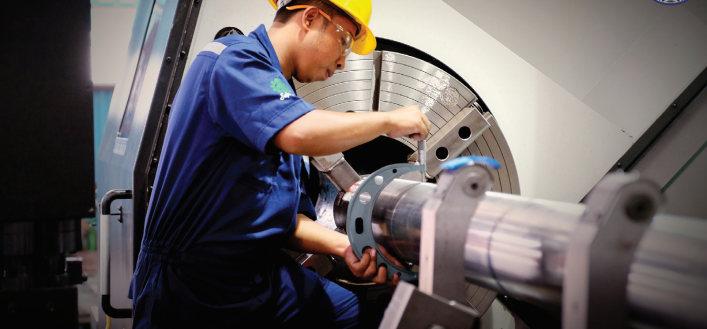
we’ve taken to ensure our products are meeting the highest quality and consistency.”
For more information regarding Saga PCE liner hanger equipment and services, contact Kim Sadler at kims@sagapce.com. Regarding Lancaster Flow Automation chokes, Gerardo Haro-Valdez can be contacted at gerardo@lancasterflow.com or Melvin Sng at melvinsng@sagapce.com.


